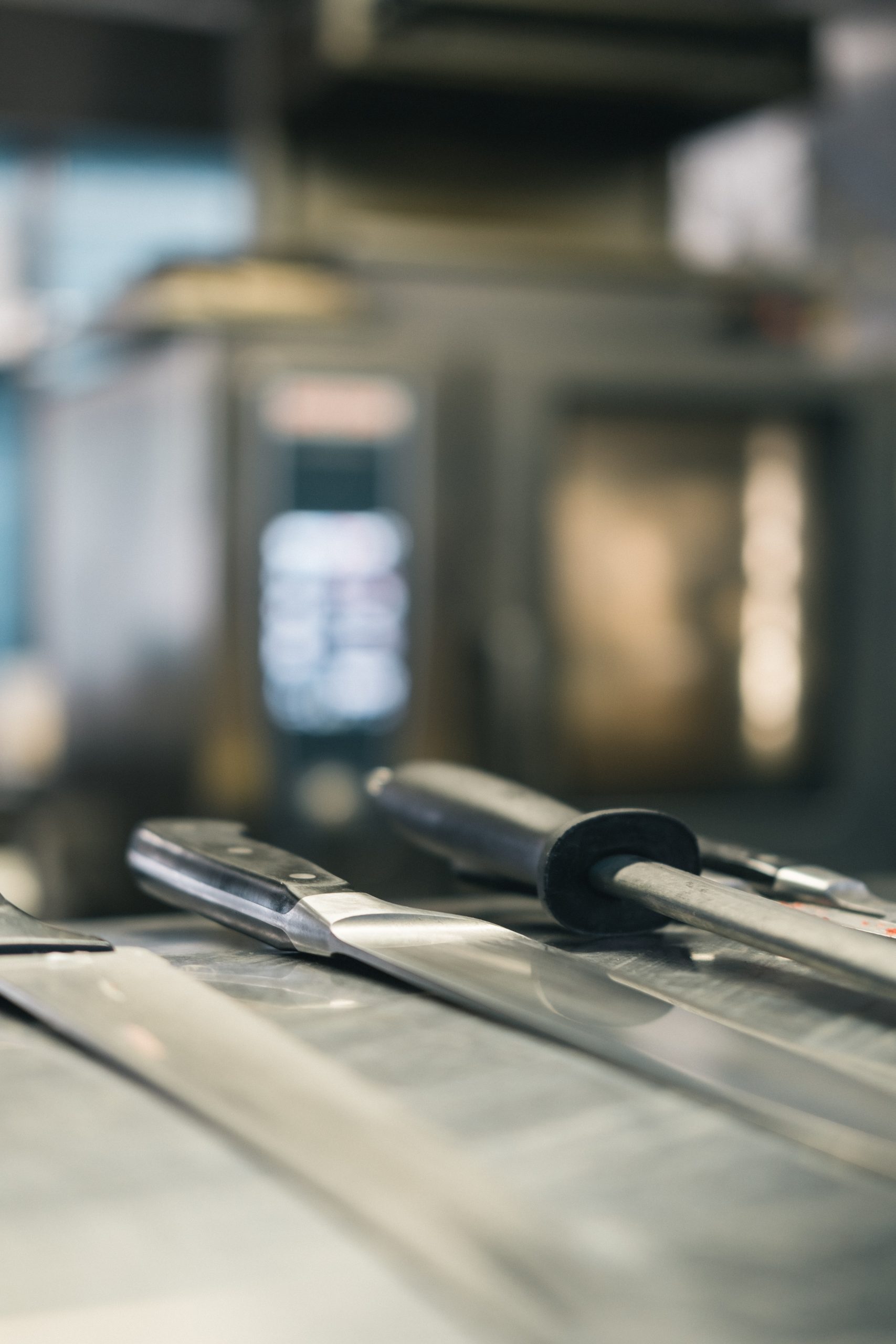When most people think of important skills in the kitchen, they normally think of knowing which spice to pair with which dish and measuring out exact amounts of ingredients to make the perfect oven-baked desserts. However, one often overlooked skill in the kitchen is knowing how to correctly use a knife.
While it can seem common knowledge to know how to cut common ingredients in the kitchen, 350,000 people injure themselves with kitchen knives each year. Becoming familiar with the different types of knives in your kitchen and how to safely use each one of them can not only help you protect yourself from dangerous accidents but can also improve the taste of your cooking!
Holding Your Knife Correctly Reduces Accidents
With so many people ending up in the emergency room due to knife accidents, it is worth taking a few minutes to learn more about knife safety and how you can prevent yourself from becoming another statistic. Hannah Crowley, an executive director at America’s Test Kitchen, suggests holding a knife with what she calls a “pinch grip.”
A pinch grip is when you hold part of your hand at the top of the knife’s handle and “pinch” the top of blade with your index finger and thumb. With this method, you have more control of the knife and are less likely to cut yourself. It is undeniable that you’ll be a better cook if your hand is not bandaged due to an injury.
Cutting Food the Same Size Helps It Taste Better
Cutting food in similar sizes is important for consistent cooking time. For example, if you cut up potatoes to roast them on a sheet pan, if you slice some in large two-inch cubes while slicing others in half-inch cubes, you will quickly find out that your food is cooking unevenly. The smaller piece will cook at a faster rate than the larger ones, and you’ll end up with burned bits mixed with undercooked pieces.
Cutting your food in the same shape will also help to keep the texture of the food consistent. While the texture may not correlate directly to taste, texture plays a large factor in many people’s enjoyment of their meals.
Keep Your Knives in Top Shape
A dull knife is more likely to cause a kitchen accident than a sharp one. A dull one will take more pressure to cut and is thus more likely to slip while you are slicing something. You can sharpen your knives at home with an electric knife sharpener or a traditional honing steel, which is typically a metal rod you hold in one hand while running the knife’s edge against it. If you want to get your knives as sharp as they were the day you bought them, consider going to a professional knife sharpener as their equipment will be top-of-the-line.
A sharp knife will also help to cut your food into pieces that look appealing. Again, while the cut of the food may not directly change the taste, appearance has a huge effect on people’s perception of their food.
A Good Knife is Worth the Investment
A basic chef’s knife is one of the best investments you can make in the kitchen. A chef’s knife is a versatile instrument that can safely cut anything from carrots to melons. Its size (typically an eight-to-10-inch blade) is useful for most day-to-day cooking around the house. While a good quality knife’s price can run relatively high compared to store-brand versions, you will save yourself the hassle of having to replace a dull blade quickly on, a common problem with cheaper blades. Your knife is also less likely to break, which is a dangerous defect that bottom-tier cutlery can sometimes have, especially if the blade does not go all the way down the handle.
Brush up on your knife skills, and you’ll find that your overall cooking style improves, too. With perfectly cut ingredients and evenly cooked cuisines, you’ll be a better cook before you know it.

